Sun-Earth Day 2003
News story originally written on March 14, 2003
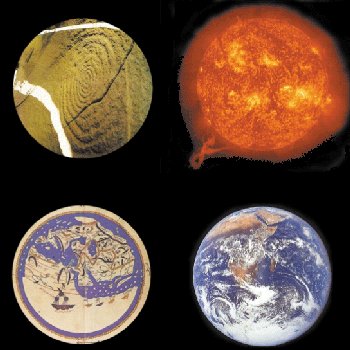
March 18, 2003 is Sun-Earth Day! Sun-Earth Day is a national celebration of the Sun,
the space around the Earth (geospace), and how all of it affects life on our planet.
In classrooms, museums, planetariums, and at NASA centers, we plan to have a blast sharing stories,
images, and activities related to the Sun-Earth connections in our solar system.
Please see the links below for more information on how to participate in Sun-Earth Day.
Also, enjoy Sun-Earth web pages with further reading, classroom activities, Flip Books, FAQ's and GAMES!
This image shows views of the Sun and the Earth at two different time periods in history.
Going from left to right, top to bottom, you see the Sun as depicted by the Anasazi around 1000 A.D.,
the Sun as seen from a satellite around 2000 A.D., the Earth as the Islamic artists depicted it around 1000 A.D.,
and the Earth as viewed from Apollo 11 around 2000 A.D. A lot can change in a thousand years!
Click on image for full size (61K GIF)
Windows Original
 Official Sun-Earth Day site
Official Sun-Earth Day site
 Events Happening in Your Area
Events Happening in Your Area
Sun-Earth Web Resources (Further Reading...)
 ACE Mission Update
ACE Mission Update
 All about the Earth
All about the Earth
 All about the Sun
All about the Sun
 The Aurora
The Aurora
 The Earth's Atmosphere
The Earth's Atmosphere
 The Earth's Magnetosphere
The Earth's Magnetosphere
 Earth Space Missions
Earth Space Missions
 Mythology about the Earth
Mythology about the Earth
 Solar Activity
Solar Activity
 Solar Missions
Solar Missions
 Solar Mythology
Solar Mythology
 Solar News
Solar News
 Space Physics and Aeronomy Research Collaboratory
Space Physics and Aeronomy Research Collaboratory
 Spaceweather.com
Spaceweather.com
 Space Weather Today
Space Weather Today
 Stanford Solar Center
Stanford Solar Center
 Sun Earth Connection Education Forum
Sun Earth Connection Education Forum
 Sunspots and the Solar Cycle
Sunspots and the Solar Cycle
 Ulysses Mission Update
Ulysses Mission Update
Sun-Earth Web Resources (Real-time Data and Images...)
 Earth Image Archive
Earth Image Archive
 LASCO/EIT Real-Time Movies of the Sun
LASCO/EIT Real-Time Movies of the Sun
 Latest 48 hours of Solar Wind Data - Live from College Park
Latest 48 hours of Solar Wind Data - Live from College Park
 Real-Time Solar Images
Real-Time Solar Images
 Real-Time Solar Wind Data
Real-Time Solar Wind Data
 Real-Time Solar Wind Monitoring by the ACE Spacecraft
Real-Time Solar Wind Monitoring by the ACE Spacecraft
 SPARC Real-Time Solar-Terrestial Conditions
SPARC Real-Time Solar-Terrestial Conditions
 Solar Image Archive
Solar Image Archive
Sun-Earth Flip Books
 Aurora Flip Book
Aurora Flip Book Spectacular northern lights on July 14, 2000
 Aurora Oval Flip Book
Aurora Oval Flip Book See the auroral oval brighten and then dim again...
 CME Flip Book
CME Flip Book A coronal mass ejection for the July 14, 2000 storm!
 Another CME Flip Book
Another CME Flip Book Triple threat coronal mass ejection!
 Solar Eruption Flip Book
Solar Eruption Flip Book A powerful prominence from 1999!
 Solar Flare Flip Book
Solar Flare Flip Book Make a flipbook of one of the brightest flares of the decade!
Sun-Earth Games
 Order it Up: Solar System Edition
Order it Up: Solar System Edition
 Junk in Space
Junk in Space
 Color the Earth
Color the Earth
 Color the Sun
Color the Sun
 Solar Concentration
Solar Concentration
 Solar Word Search
Solar Word Search
 Sun-Earth Flip Books
Sun-Earth Flip Books
 Sun and Earth Adlib Stories
Sun and Earth Adlib Stories
 Weather Crossword Puzzle
Weather Crossword Puzzle
Sun FAQ's
 Fun with the Sun
Fun with the Sun
 Sun Quickies
Sun Quickies
Earth FAQ's
 Extraordinary Earth
Extraordinary Earth
 Earth Quickies
Earth Quickies
Sun & Earth Classroom Activities
 Auroras
Auroras
 Blackout!!!
Blackout!!!
 Comparison Activities for the Sun
Comparison Activities for the Sun
 Create a Tornado
Create a Tornado
 Create Your Own Cloud
Create Your Own Cloud
 Create Your Own Fog
Create Your Own Fog
 Create Your Own Lightning
Create Your Own Lightning
 Create Your Own Thermometer
Create Your Own Thermometer
 Daytime Astronomy
Daytime Astronomy
 Graphing Sunspot Cycles
Graphing Sunspot Cycles
 The Hidden Picture
The Hidden Picture
 Latent Heat and Clouds
Latent Heat and Clouds
 Let's Take a Rock Apart!
Let's Take a Rock Apart!
 Lunar Lollipops
Lunar Lollipops
 The Magnetometer
The Magnetometer
 Make it Rain!
Make it Rain!
 Mechanical Weathering Lab
Mechanical Weathering Lab
 Observing the Sun
Observing the Sun
 Our Sun
Our Sun
 Pangaea Puzzle
Pangaea Puzzle
 Paper Magnetosphere
Paper Magnetosphere
 Par 5
Par 5
 Plotting Sunspot Activity
Plotting Sunspot Activity
 Shadows...
Shadows...
 The Singing Sun
The Singing Sun
 Solar Events
Solar Events
 Spectral Surprise
Spectral Surprise
 Solarscapes
Solarscapes
 Sun-Earth Flip Books
Sun-Earth Flip Books
 Sun and Weather
Sun and Weather
 Tracking an Active Sunspot Region
Tracking an Active Sunspot Region
 Tetrahedron Model
Tetrahedron Model
 Thunder and Lightning
Thunder and Lightning
 Watch the Sky
Watch the Sky
 Weather and Careers Exercise
Weather and Careers Exercise
You might also be interested in:
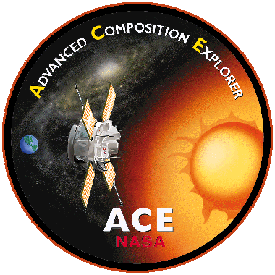
Have you ever wondered what you are made of? Where did the elements come from that make up your body? The elements that make up your body are the same elements found on the Earth. Where did those Earth
...more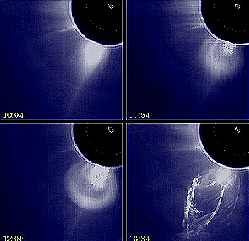
The Sun is not a quiet place, but one that exhibits sudden releases of energy. One of the most frequently observed events are solar flares: sudden, localized, transient increases in brightness that occur
...more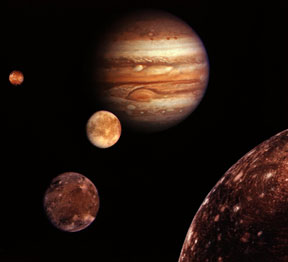
Astronomers have discovered twelve new moons of Jupiter so far in 2003. Jupiter now has a total of 52 moons that we know of. Jupiter, the largest planet in our Solar System, has more moons than any other
...more
On August 27, 2003, Earth and Mars will be closer together than they have been in thousands of years. Mars will pass within 55,758,006 kilometers (34,646,418 miles) from Earth. Astronomers have calculated
...more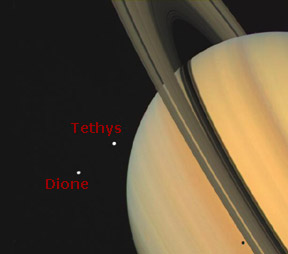
Astronomers have recently discovered nine new moons. The astronomers found eight new moons of Jupiter and one new moon of Saturn. We now know of 60 moons orbiting Jupiter and 31 orbiting Saturn. The new
...more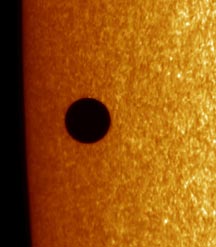
The planet Mercury appeared to cross in front of the Sun on May 7, 2003. Astronomers call the event a transit. A transit is like a solar eclipse. However, a transit occurs when a planet, instead of Earth's
...more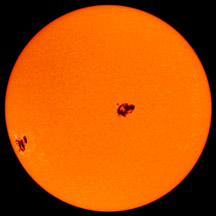
Two very large groups of sunspots have appeared on the Sun. Each of the groups is about as big as the planet Jupiter, which is the largest planet in our Solar System! Sunspots are places on the Sun where
...more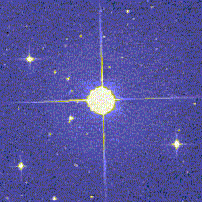
Astronomers have identified another exoplanet, that is, a planet outside our solar system. This makes a total of 102 exoplanets that have so far been found by astronomers! The astronomers that identified
...more

 ACE Mission Update
ACE Mission Update All about the Earth
All about the Earth All about the Sun
All about the Sun The Aurora
The Aurora The Earth's Atmosphere
The Earth's Atmosphere The Earth's Magnetosphere
The Earth's Magnetosphere Earth Space Missions
Earth Space Missions Mythology about the Earth
Mythology about the Earth Solar Activity
Solar Activity Solar Missions
Solar Missions Solar Mythology
Solar Mythology Solar News
Solar News Space Physics and Aeronomy Research Collaboratory
Space Physics and Aeronomy Research Collaboratory Spaceweather.com
Spaceweather.com Space Weather Today
Space Weather Today Stanford Solar Center
Stanford Solar Center Sun Earth Connection Education Forum
Sun Earth Connection Education Forum Sunspots and the Solar Cycle
Sunspots and the Solar Cycle Ulysses Mission Update
Ulysses Mission Update













